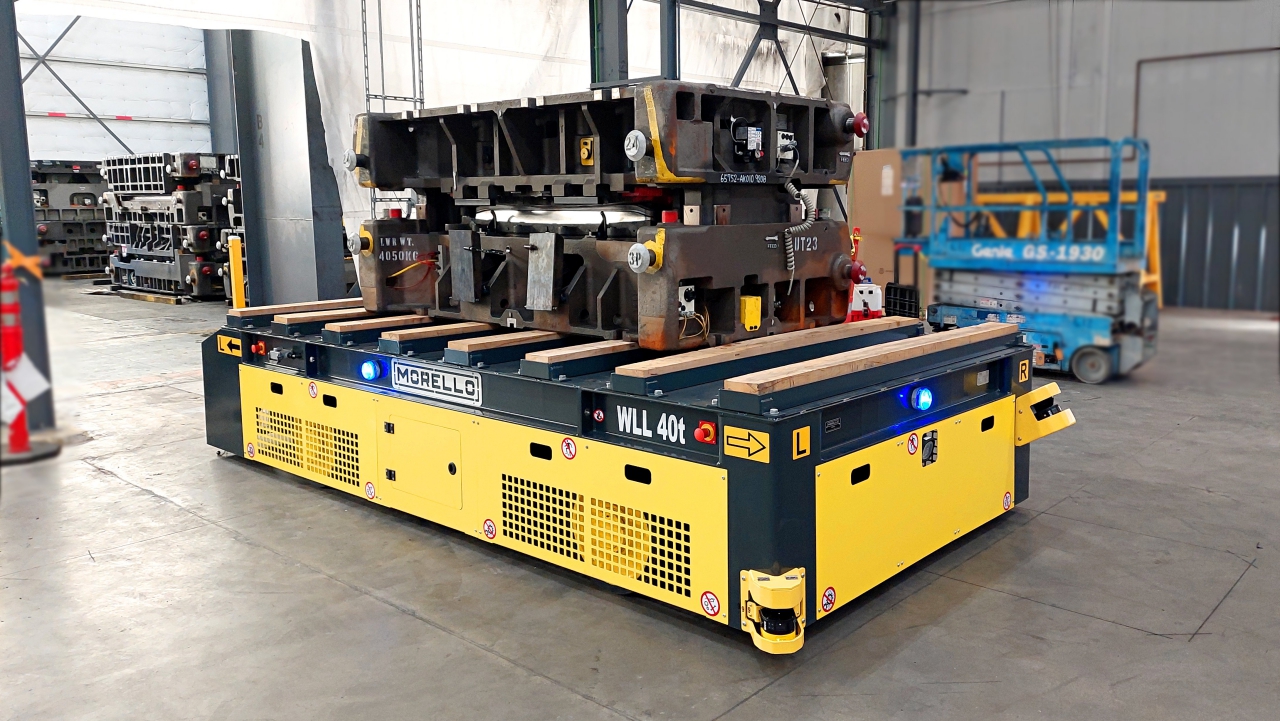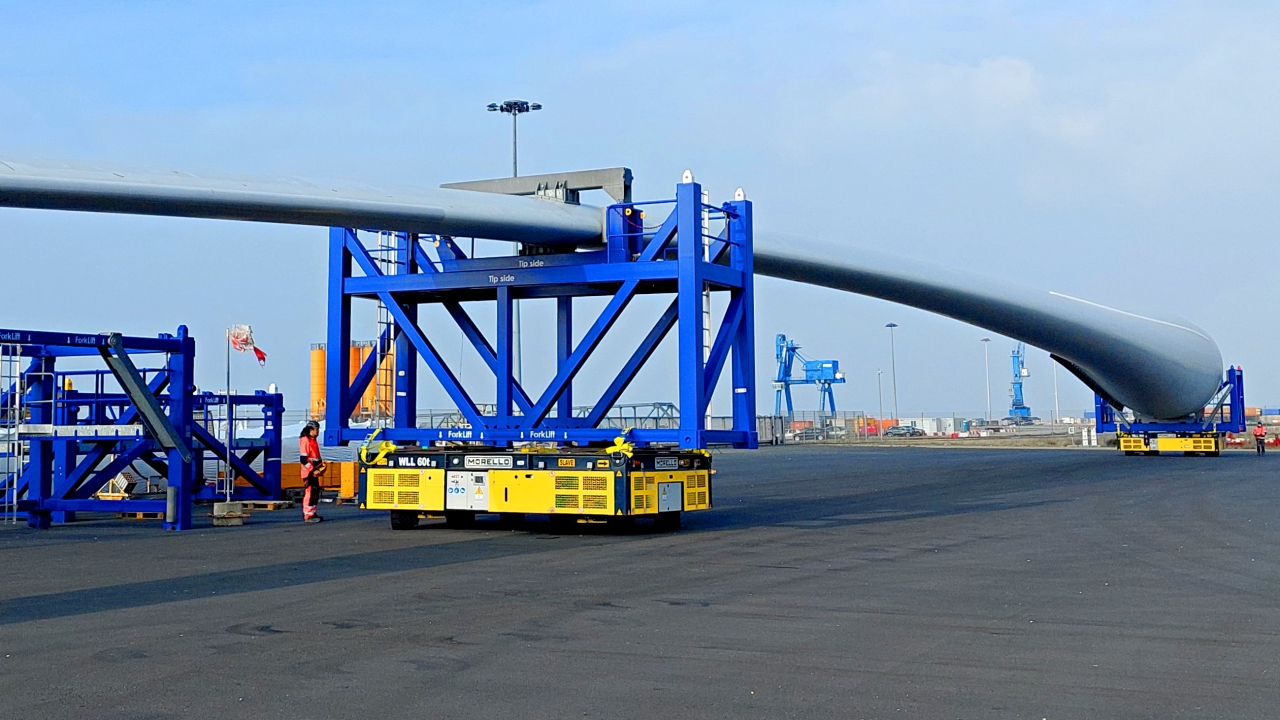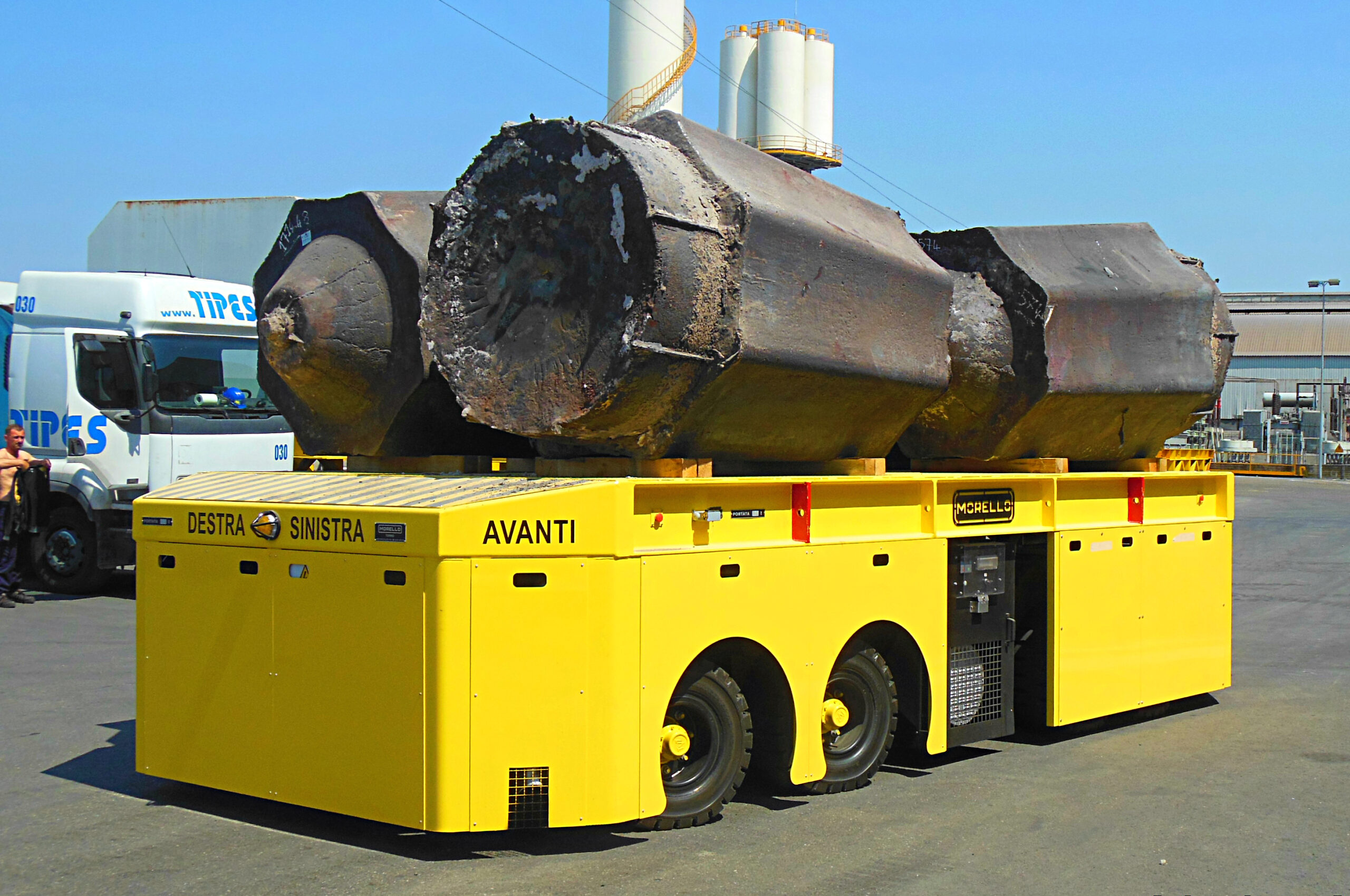Heavy-duty AMR (Automated Mobile Robot) carts are rapidly becoming a preferred solution for manufacturing companies, both in Italy and internationally, looking to automate the handling of heavy materials within their facilities. This increasing demand stems from production managers recognizing the significant advantages that automation brings to the movement and management of raw materials, semi-finished goods, and finished products. Morello has positioned itself as a trusted partner in the automated handling sector, meeting the evolving needs of the industry.
Common questions surrounding heavy-load AMRs include: what are they, how do they operate, and what concrete benefits do they provide? Let’s delve into the answers:
How does a heavy-duty AMR cart compare to a remote-controlled electric flatbed transporter in functionality?
At first glance, an AMR vehicle and a traditional remote-controlled electric flatbed transporter may appear similar, but in reality, they differ significantly particularly in terms of navigation, control, and practical applications.
Navigation:
- AMRs utilize advanced navigation systems to move They can create and continuously update maps of their surroundings using SLAM (Simultaneous Localization and Mapping), laser guidance, GPS, or other technologies. This allows them to adapt seamlessly to dynamic environments without the need for external guidance.
- In contrast, remote-controlled transporters depend entirely on human operators for navigation. They are steered via radio or other communication systems, requiring constant human input to direct and operate
Control:
- AMRs are governed by advanced software and algorithms that automate routing and path planning. Equipped with a suite of sensors, they can safely navigate, avoid obstacles and personnel, and continuously optimize their routes for efficiency and safety.
- Remote-controlled transporters, on the other hand, are manually operated using joysticks or other control Safe operation typically requires a clear line of sight. While these transporters are equipped with safety sensors, all driving functions require active human control.
Applications:
- AMRs are widely used in manufacturing and logistics for autonomous material handling and transport. Their ability to adapt to dynamic environments makes them ideal where flexibility is essential. They offer high precision, reduce the risk of accidents or damage, and enhance just-in-time production by streamlining workflows and minimizing manual labor.
- Remote-controlled transporters have a long-standing presence in industrial settings. They improve safety and operational efficiency, help lower handling costs, and contribute to decarbonizing the workplace. These systems are best suited for environments that require significant human involvement in navigation and handling processes.
AMRs vs. Traditional Transporters: key differences
- Autonomy vs. Manual Control: AMRs operate autonomously, navigating and performing tasks without human input. In contrast, remote-controlled transporters require continuous manual operation.
- Flexibility and Adaptability: AMRs can interpret and respond to their environment in real time, making adjustments without human intervention. Remote-controlled systems, however, depend entirely on the operator’s awareness and reactions to environmental changes.
- Safety and Efficiency: AMRs improve workplace safety by minimizing human error and increase productivity through automation of repetitive tasks. Remote-controlled systems still offer value where direct human control is essential, especially in complex or unpredictable settings.
The key economic benefits of heavy-duty AMR carts
Investing in a heavy-duty AMR transporter is a strategically sound decision, offering a strong return on investment (ROI) driven by several core advantages:
- Labor cost reduction
AMRs eliminate the need for manual labor in repetitive, physically demanding tasks, significantly reducing wage and overtime expenses. Operating around the clock without breaks, they minimize downtime and reduce dependence on human workers. - Operational efficiency improvements
- Faster workflows: AMRs streamline material flow, reducing production line delays.
- Precision handling: Equipped with advanced sensors and navigation systems, AMRs ensure accurate load placement, minimizing errors and material waste.
- Reduced downtime
AMRs operate autonomously with minimal supervision, preventing bottlenecks caused by human fatigue or scheduling conflicts, thus maintaining consistent productivity. - Safety-driven cost savings
By automating hazardous tasks, such as transporting heavy loads in high-traffic areas, AMRs reduce workplace accidents and associated costs (e.g., insurance, worker compensation). Their sensors enable smooth, collision-free navigation. - Maximum flexibility
AMRs can quickly adapt to changing layouts or production processes without the need to modify existing infrastructure, offering exceptional versatility. - Seamless integration with existing digital systems
AMRs are compatible with ERP, WMS, and IoT platforms, enabling seamless data synchronization and empowering data-driven decision-making across operations.
Morello: customized solutions powered by advanced technology
At Morello, we continuously integrate the latest technologies to design and build custom AMR transporters for industrial plants worldwide. Automated material handling solutions are rapidly becoming a standard across nearly all the industries we serve.
Get in touch to discover how an AMR cart can boost productivity, improve workplace safety, and reduce operational costs.












